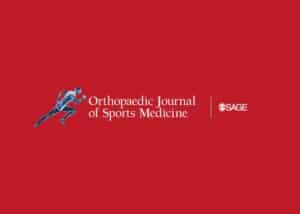
Authors:
Nicholas N. DePhillipo, PhD, ATC, OPE-C; Grant J. Dornan, MSc; Travis J. Dekker, MD; Zachary S. Aman,BA; Lars Engebretsen, MD, PhD, and Robert F. LaPrade, MD, PhD
Background
Satisfactory outcomes have been reported after all-inside meniscus ramp repair with combined anterior cruciate ligament reconstruction (ACLR). However, clinical outcomes after ACLR with inside-out meniscus ramp repair are limited.
Purpose/Hypothesis
The purpose of this study was to evaluate patient-reported outcomes for patients who underwent ACLR and medial meniscus ramp repair compared with those who underwent isolated ACLR; patients in the 2 groups were matched for age, sex, and sport/activity. The null hypothesis was that there would be no significant differences in clinical outcomes between groups at a minimum of 2 years postoperatively.
Study Design
Cohort study; Level of evidence 3.
Methods
Patients who underwent primary ACLR with bone–patellar tendon–bone (BPTB) autograft by a single surgeon were retrospectively identified. A subgroup of patients with combined ACLR and meniscus ramp repair with a minimum 2-year post- operative follow-up were matched to a cohort who underwent isolated ACLR. Subjective patient-reported questionnaires, knee stability, and return to level of activity/sport were collected.
Results
There were 851 patients who underwent primary ACLR; of these, 158 (18.6%) had medial meniscus ramp lesions con- firmed at arthroscopy. The most common clinical characteristics in patients with ramp lesions were chronic injuries (68.4%), contact mechanism (88%), concomitant lateral meniscus tears (63.2%), and concomitant lateral meniscus posterior root tears (22.2%). Further, 50 patients who underwent combined ACLR and meniscus ramp repair with minimum 2-year follow-up were matched to patients who underwent isolated ACLR. Both groups reported significant improvements in subjective outcomes from preoperative to postoperative assessments (P < .001). No significant differences were found in postoperative outcomes for combined ACLR with ramp repair versus isolated ACLR (P > .05). Patients with meniscus ramp repair had increased preoperative knee laxity demonstrated by grade 3 Lachman (44% vs 6%) and pivot-shift (38% vs 12%) test results compared with patients who underwent isolated ACLR (P .005 for both).
Conclusion
This study demonstrates similar clinical outcomes, knee stability on postoperative physical examination, and return- to-sport rates for patients who underwent combined ACLR with BPTB autograft and inside-out meniscus ramp repair versus a matched cohort who underwent isolated ACLR. Clinicians should have a high index of suspicion for the presence of ramp lesions in patients with ACL tears who have a contact mechanism of injury, grade 3 Lachman test result, and concomitant lateral meniscal abnormality.
